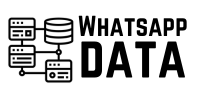The Federal Government ratified the Trade Facilitation Agreement (TFA) proposed by the World Trade Organization (WTO) and updated the Decree creating SISCOMEX by decree no. 8,229/14 to begin the development of the Single Portal that today centralizes, standardizes and harmonizes procedures aiming to reduce bureaucracy, facilitate import operations and considerably increase Brazilian exports, thus bringing more development and competitiveness to Brazil.
The Single Portal aims to reduce average foreign trade times in Brazil by around 40%, which is already a reality for exports and also for imports, which now benefit from the air CCT and the DUIMP, in line with the practice of countries that belong to the Organization for Economic Cooperation and Development (OECD).
For these changes to occur successfully, it was necessary to redesign the import and export processes in Brazil and also create a single window capable of centralizing the various pieces of information and integration with the approving bodies and private systems.
The first to become available was the Single Export Declaration (DU-E) and then the Single Import Declaration (DUIMP). In this article we will discuss more details about the New Import Process (NPI), the changes that have already occurred and what to expect in the coming years.
What is the New Import Process?
>>>>>>lass=”yoast-text-mark” />>The New accurate cleaned numbers list from frist database Import Process (NPI) is a government project that aims to simplify procedures, reduce public interventions and integrate foreign trade operators by redesigning the process. This possibility of advance dispatch speeds up the import operation in terms of time and costs.</p></p></p>
With easy integration between systems, operators can have greater control over process data, allowing them to issue reports and analyze Key Performance Indicators and use automation to optimize their operations, reducing costs and increasing operati
onal
agil
ity.
Risk Management and Compliance in the New Import Process
The single portal development It requires a careful strateg program. Also aims to simplify public services and reduce intervention in processes. For this to happen there must be a relationship of trust between the customs. Authority and companies operating in foreign Trade.
Thus, operations may have less intervention from the public sector, since they have already proven to be low risk. This compliance with customs legislation by companies operating in Foreign Trade brings greater reliability to processes, agility and greater security to shipments and to the country.
Furthermore, technology will be at the authorities’ side to verify whether operators are fulfilling their role in logistics with responsibility and risk management in their own operations. Therefore, even companies already certified as AEO must still monitor and track their operations.
What are the upcoming NPI changes?
All foreign trade modules should be aero leads implemented by the end of 2023. We just have to wait for these developments. One of the most anticipated changes is the attribute registry and product catalog:
Attribute Registration:
>>>>The tax classification of goods is one of the most sensitive areas in the process of importing goods into the country. We know that it is through the that import taxes are calculated. Whether there is a need for approvals international agreements and other administrative rules. Which is why this analysis must be carried out with great caution.
